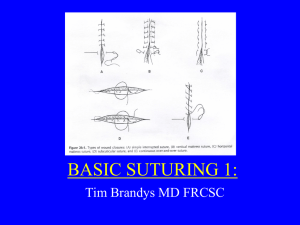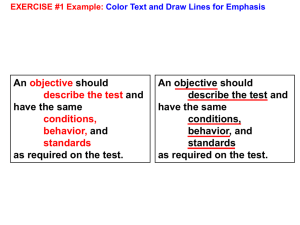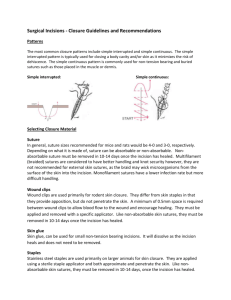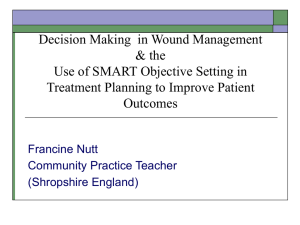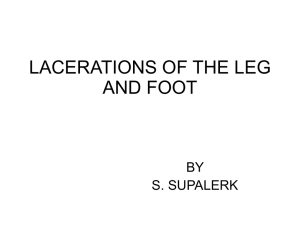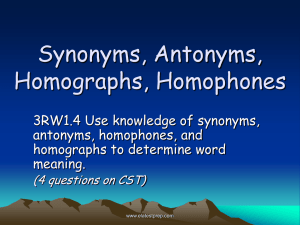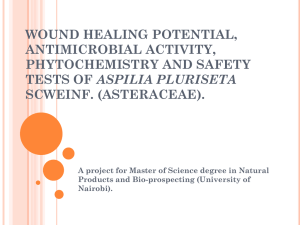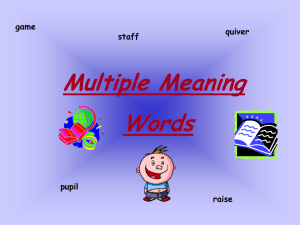Wound closure
advertisement
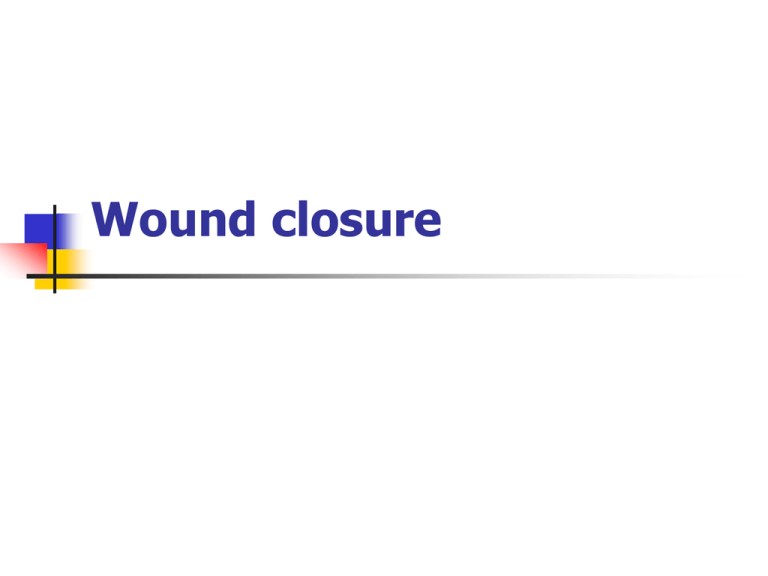
Wound closure Aesthetic closure knowledge of healing mechanisms skin anatomy suture material and closure technique Ensures optimal healing Three distinct phases Inflammation tissue formation inflammatory cells into the wound inflammatory phase occurs in the first few days as inflammatory cells migrate into the wound epithelial cells has been shown to occur within the first 12-24 hours further new tissue formation occurs over the next 10-14 days tissue remodeling wound contraction and tensile strength is achieved occurs in the next 6-12 months Affect wound healing systemic illness local factors Two types of wound healing primary intention surgical wound closure facilitates the biological event of healing by joining the wound edges minimize new tissue formation elimination of dead space by approximating the subcutaneous tissues minimization of scar formation by careful epidermal alignment avoidance of a depressed scar by precise eversion of skin edges secondary intention spontaneous healing Suture materials natural and synthetic synthetic materials absorbable and nonabsorbable less reaction less inflammatory reaction nonabsorbable sutures offer longer mechanical support monofilament and multifilament monofilaments have less drag Infection is avoided Absorbable suture materials lose tensile strength before complete absorption gut last 4-5 days in terms of tensile strength chromic form, gut can last up to 3 weeks Vicryl and Dexon maintain tensile strength for 7-14 days complete absorption takes several months Maxon and PDS long-term absorbable sutures lasting several weeks requiring several months for complete absorption Nonabsorbable sutures silk has the lowest strength nylon has the highest Suture technique Running, or continuous stitch made with one continuous length of suture material close tissue layers which require close approximation speed of execution, and accommodation of edema during the wound healing process greater potential for malapproximation of wound edges with the running stitch than with the interrupted stitch needle at a 90° angle to the skin within 1-2 mm of the wound edge and in the superficial layer exit through the opposite side equidistant to the wound edge and directly opposite the initial insertion Interrupted stitch stitch is tied separately used in skin or underlying tissue layers more exact approximation of wound edges can be achieved with this technique than with the running stitch Mattress suture a double stitch that is made parallel (horizontal mattress) or perpendicular (vertical mattress) to the wound edge advantage of this technique is strength of closure each stitch penetrates each side of the wound twice inserted deep into the tissue Purse string continuous stitch paralleling the edges of a circular wound wound edges are inverted when tied used to close circular wounds, such as hernia or an appendiceal stump Smead-Jones/Far-and-Near a double loop technique alternating far and near stitches greater mechanical strength than continuous or simple interrupted sutures used for approximating fascial edges, especially for patients at risk for fascial disruption or infection Continuous Locking, or Blanket Stitch a self-locking running stitch used primarily for approximating skin edges good approximation edges is paramount to proper wound closure technique deep sutures serve to eliminate the dead space and relieve tension from the wound surface deep sutures also ensure proper alignment of the wound edges and contribute to their final eversion wound closure may require sharp undermining of the tissues to minimize tension on the wound achieve hemostasis eversion of all skin edges avoids unnecessary depression of the resultant scar Immediate and delayed complications may occur with wound closure immediate complications formation of hematoma wound infectionp prophylactic antibiotics late complications scar formation excess tension lack of eversion of the edges hypertrophic scarring and keloid formation\ stitch marks wound necrosis Suture removal face: 3-4 days scalp: 5 days trunk: 7 days arm or leg: 7-10 days foot: 10-14 days Thanks for your attention !!!

